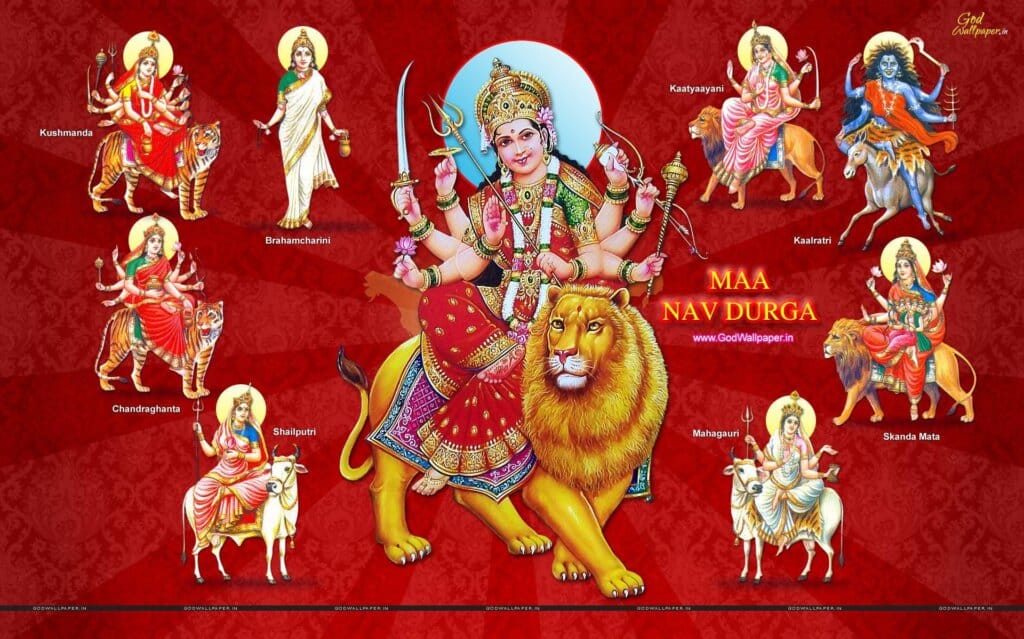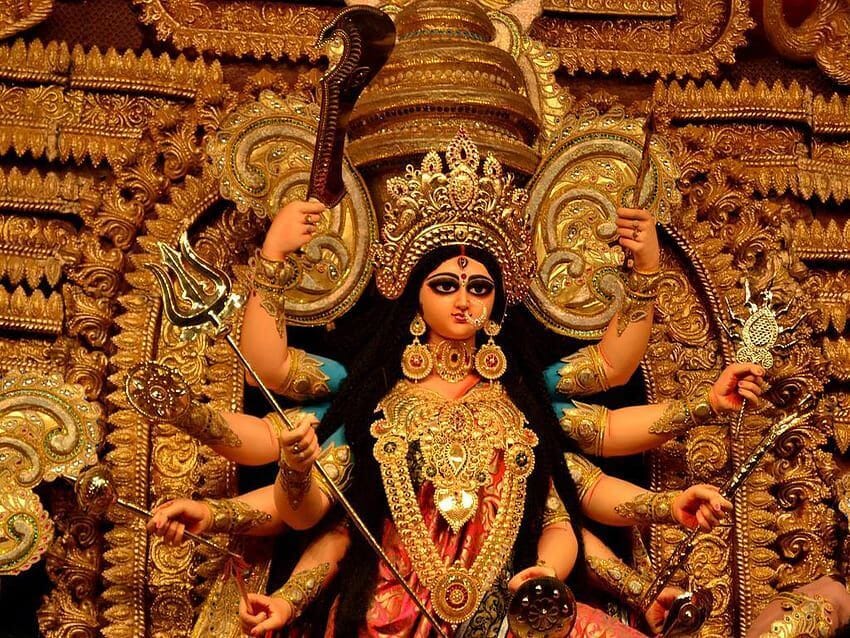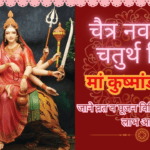Navratri is a significant Hindu festival honoring Maa Durga, celebrated biannually—Chaitra Navratri in the spring season and Shardiya Navratri during autumn.
Both Navratris are deeply meaningful in terms of religious and spiritual observance, marked by fasting, prayer, and devotion over a span of nine days.
While they share similar practices, each has its own unique cultural, astrological, and spiritual characteristics.
This article delves into the distinctions and importance of Shardiya and Chaitra Navratri in detail.
What does Navratri signify?
The word Navratri is derived from two Sanskrit terms:
“Nav” (which translates to nine)
“Ratri” (which translates to nights)
Therefore, Navratri represents nine nights of sacred worship, dedicated to the nine incarnations of Goddess Durga, often referred to as Navdurga.
These nine days symbolize the triumph of good over evil, the awakening of the spirit, and the cleansing of the soul.
There are four Navratris observe throughout the year:
- Shardiya Navratri (September-October)
- Chaitra Navratri (March-April)
- Magha Gupt Navratri (January-February)
- Ashadha Gupt Navratri (June-July)
Among these, Shardiya and Chaitra Navratri are the most celebrated.

Primary Differences Between Shardiya and Chaitra Navratri
| Factor | Chaitra Navratri | Shardiya Navratri |
| Timing | Celebrated in Chaitra month (March-April) during Vasant Ritu (spring). | Celebrated in Ashwin month (September -October ) during sharad ritu (autumn). |
| First day celebration | Begins on pratipada (first day) of chaitra month and coincides with Hindu new year (vikram samvat) in many regions. | begins on pratipada (first day) of ashwin month and marks the start of festive season in India. |
| Last day celebration | Ends with Ram navami, celebrating the birth of Lord ram | Ends with Vijayadashami (Dussehra) marking the victory of lord Ram’s over Ravana. |
| Seasonal Importance | Represents the transition from winter to summer. | represents the transition from monsoon to winter. |
| Astrological Importance | Linked with sun’s entry in Aries (mesha rashi) considered highly auspicious for new beginnings. | Occurs when sun is in Virgo (kanya rashi) considered spiritually powerful for removing negative energies. |
| Festivals Associated | Includes Gudi padwa,Ugadi and Ram navami. | Includes Durga puja, Dussehra and Vijayadashami. |
| Worship focus | Worship mainly Emphasizes Maa Durga and Lord Ram. | Worship is grand, especially in bengal, gujarat and north India with durga puja. |
Significance of Chaitra Navratri
- Celebration of the Hindu New Year
In various areas, Chaitra Shukla Pratipada signifies the commencement of the Hindu New Year (Vikram Samvat and Shaka Samvat).
It is observe as Gudi Padwa in Maharashtra and Ugadi in Karnataka, Andhra Pradesh, and Telangana.
- Connection to Ram Navami & Lord Ram
The ninth day of Chaitra Navratri is known as Ram Navami, which symbolises the birth of Lord Ram.
During this time, numerous devotees recite the Ramayana, Sundarkand, and Ram Raksha Stotra.
- Relevance in Ayurveda & Health
The shift from winter to summer can leave the body vulnerable to illnesses.
Fasting during Navratri cleanses the body and harmonizes energies.
- Astrological & Spiritual Significance
The sun transitions into Aries (Mesha Rashi), marking the start of a fresh astrological cycle.
Chaitra Navratri is seen as particularly favorable for new initiatives, marriages, and spiritual advancement.
- Rituals & Traditions
Kalash Sthapana (Ghatasthapana) takes place on the inaugural day.
Daily worship of the nine forms of Maa Durga is accompanied by fasting.
Kanya Puja (honoring young girls as divine embodiments of Devi) is conduct on the Ashtami (8th day) or Navami (9th day).
The celebrations conclude with Ram Navami festivities.

Significance of Shardiya Navratri
- Reverence for Goddess Durga
Recognized as the most influential Navratri, featuring significant Durga Puja festivities, especially in West Bengal, Odisha, Assam, and Bihar.
Individuals set up Durga idols and carry out Ghatsthapana, Havan, and Sindoor Khela.
- Triumph of Good Over Evil
This Navratri represents Maa Durga’s conquest over Mahishasura, celebrated through Durga Puja.
It culminates with Vijayadashami, symbolizing Lord Ram’s victory over Ravan.
- Astrological & Seasonal Relevance
This occurs during Sharad Ritu, a period of seasonal transformation when energies are heightened.
It is ideal for spiritual cleansing and the removal of negative karma.
- Nine Days of Divine Devotion
Each day honors a distinct form of Navdurga:
- Shailputri (First Day) – Goddess of mountains.
- Brahmacharini (Second Day) – Goddess of penance.
- Chandraghanta (Third Day) – Goddess of courage.
- Kushmanda (Fourth Day) – Goddess of cosmic energy.
- Skandamata (Fifth Day) – Mother of Kartikeya.
- Katyayani (Sixth Day) – Goddess of strength.
- Kaalratri (Seventh Day) – Goddess who eradicates ignorance.
- Mahagauri (Eighth Day) – Goddess of purity.
- Siddhidatri (Ninth Day) – Goddess of divine blessings.
- Rituals & Grand Festivities
Garba and Dandiya Raas are prominent highlights in Gujarat.
Kanya Pujan is conduct on Ashtami or Navami.
Ravan Dahan (the burning of Ravan’s effigy) on Dussehra signifies the triumph of truth over deception.

Conclusion
Both Chaitra and Shardiya Navratr hold spiritual significance, honoring Maa Durga’s divine strength and triumph over evil.
Chaitra Navratr is link with Lord Ram’s birth and the Hindu New Year, while Shardiya Navratr is celebrated lavishly with Durga Puja and Vijayadashami.
Though the rituals and fasting practices remain consistent, their astrological, seasonal, and mythological nuances render each Navratri distinctive.
Observing Navratri with reverence, fasting, and spiritual activities fosters inner purification and divine blessings from Maa Durga.
Also check: Durga Saptshati paath









